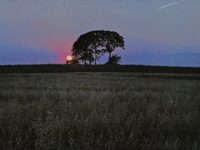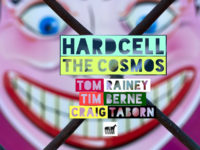It’s said that music has its own language and syntax. I’m not talking about the technical stuff like notes, measures, and key centers, but the more subtle areas of melodic development, harmonic structure (a gray area), and dynamics. While music can be adequately described using formal rules, the language/storytelling part is much harder to bring into focus.
I’ve just finished reading a book about music by Victor Wooten, bass player for Bela Fleck. It was quite an unusual read. An interesting point made early on is that we often teach music far differently than language. That is, with language we are immersed with people who are quite good at it, allowing for the slow (but steady) growth of practical knowledge. With music, we present the rules first, holding off on practical experience until it’s too late (in my opinion).
What’s the big deal? Aside from stunting the average person’s musical growth in learning how to play, there’s a similar holdback with listening. The western ear is trained to recognize a subset of the full world of music, the result being that many items — many stories — are allowed to pass by. Or worse, those ‘out’ elements are dismissed as ‘weird.’ It’s really too bad, as there is a world of fresh sonic storytelling out there. Sometimes, the stories are of the more abstract type, where the inspiration might be quite indirect, giving the listener full responsibility (and freedom) to complete the construct. But then there are things like Those Moments Before, where each composition’s direction is inspired by a particular event, be it musical or physical.
Your question might be, “How can a listener perceive the tune’s origin?” Read on, because I’m pretty sure that’s not the right question: Clearly, Edward Ratliff has a cinematic style of listening. He goes to a bar at the airport in Barcelona, and comes up with “Café Cortado.” The accordion and the jaunty horns (especially Doug Wieselman’s Eb clarinet)…pure joy. The object (espresso with milk) may never be known, but the elation can’t be missed.
For “Veloce,” we have a dream involving a heist and an escape via a Vespa. Dang, I’ve always wanted a Vespa but TheWife™ always says no. Maybe if I wrote a tune this cool. The early section of tension-building is particularly effective, especially after the deed has been done and the chase commences. “Well-Dressed And Elegant,” taking inspiration from the great Johnny Hodges, asking the question (and yes, I’m stealing directly from the liner notes here) “How can someone be so cool and so hot at the same time?” Great question! The musical response is inspired, with Ratliff’s ensemble veering off here and there while maintaining a cool and detached swing.
What strikes my ear about this record is that it visits many stylistically different areas while not losing a sense of cohesion. Textures vary from sorta-polka to sorta-tango with a whole lot explored in between. The small group interplay of “Minimus” (just accordion, soprano sax, and acoustic bass) seems right at home next to the “Kowloon Noir,” a dark and surfy story with some ghostly unison passages featuring Ratliff on trumpet and Nate Radley on electric guitar. The fact that the composition is based on a movie that takes inspiration from Kurosawa’s “Seven Samurai” is less important than the reality of my ear parts becoming lost in the music.
All of which brings me back to the statement of the listener perceiving a tune’s “original intent.” It’s quite difficult to do with lyrics and monumentally hard to do without — but maybe none of that matters. If even a slight bit of the composition’s emotion is imparted on the listener, then that person has been changed for the better. On any given day, that has to be a good thing.
[amazon_enhanced asin=”B002R19CNQ” container=”” container_class=”” price=”All” background_color=”FFFFFF” link_color=”000000″ text_color=”0000FF” /]
- How Eric Clapton’s ‘Me and Mr. Johnson’ Made the Case for British Blues - March 20, 2024
- Why Todd Rundgren’s ‘Back to the Bars’ Remains So Powerful - December 13, 2023
- Reevaluating Bruce Springsteen’s ‘The Wild, the Innocent and the E Street Shuffle’ - September 11, 2023




